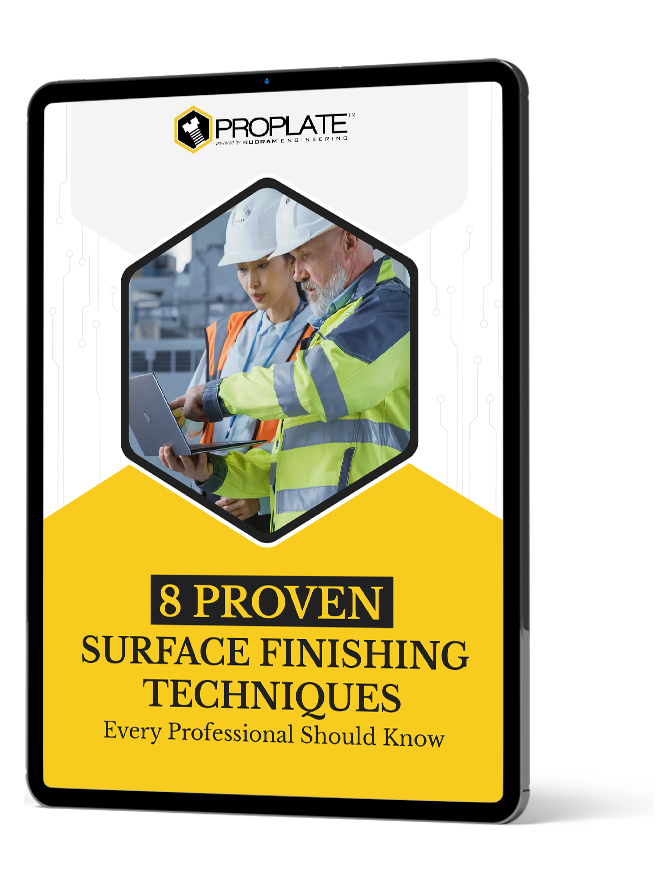In various industries, the longevity, performance, and appearance of materials, especially metals, are crucial to product success. Whether in aerospace, automotive, or heavy machinery manufacturing, achieving high standards of durability and resistance to corrosion is essential. One of the most effective methods to ensure materials can withstand the challenges of their working environment is through chemical surface treatment.
This blog delves into the world of chemical surface treatment, explaining its importance, key processes, and the benefits it brings to industrial applications.
What is Chemical Surface Treatment?
Chemical surface treatment refers to a range of industrial processes used to clean, protect, and improve the surface characteristics of materials, primarily metals. These treatments are designed to alter the surface properties to enhance the material’s resistance to corrosion, improve paint adhesion, increase wear resistance, and provide a more aesthetically pleasing appearance.
Surface treatments are typically applied through cleaning, coating, or altering the chemical composition of the material’s surface. The choice of treatment depends on the material’s end-use, the environmental conditions it will face, and the specific performance requirements.
Why is Chemical Surface Treatment Important?
Chemical surface treatment plays a critical role in improving both the functionality and lifespan of materials. Untreated metal surfaces are prone to oxidation, corrosion, and wear, which can lead to premature failure in industrial environments. The benefits of applying chemical treatments include:
Different types of chemical surface treatments are employed based on the specific requirements of the material and its intended use. Below are some of the most common processes used in industrial applications:
1. Cleaning and Degreasing
Before any surface treatment can be applied, the material must be thoroughly cleaned. Cleaning involves removing contaminants such as oils, grease, rust, and dirt from the surface to prepare it for further treatment. Various chemical solutions are used to break down and remove these substances, ensuring the surface is free from residues that may interfere with subsequent treatments.
Typical processes include:
2. Phosphating
Phosphating is a popular chemical treatment used primarily on steel and iron surfaces to improve corrosion resistance and paint adhesion. This process forms a layer of insoluble phosphate crystals on the metal surface, which serves as a protective barrier and a primer for subsequent painting or coating.
Key advantages of phosphating:
3. Chromating
Chromating, also known as chromate conversion coating, is a chemical surface treatment process mainly applied to metals like aluminum, zinc, and magnesium to improve corrosion resistance. This process involves applying a chromate-based solution to the surface, which reacts with the metal to form a thin, protective film.
Benefits of chromating:
4. Passivation
Passivation is a chemical treatment applied to stainless steel and other corrosion-resistant metals to enhance their ability to withstand environmental damage. The process removes free iron from the surface of the material, preventing the formation of rust and corrosion.
Why passivation is important:
5. Electroplating
Electroplating involves using an electric current to deposit a thin layer of metal onto the surface of another material. This treatment improves the material’s appearance, wear resistance, and corrosion protection. Common electroplated metals include nickel, chromium, and zinc.
Applications of electroplating:
6. Anodizing
Anodizing is a surface treatment primarily used on aluminum and titanium. This process creates a thick oxide layer on the surface through an electrochemical reaction. The anodized layer is not only highly durable and corrosion-resistant but also capable of holding dyes for coloring, making it a popular choice for architectural and consumer goods.
Advantages of anodizing:
7. Coating with Sealants
After treatments like phosphating or chromating, sealants are often applied to provide an additional layer of protection. These coatings can enhance the corrosion resistance and durability of the treated surface while also improving its appearance.
Common sealants include:
Industries That Benefit from Chemical Surface Treatment
Chemical surface treatments are critical across a wide range of industries that rely on high-performance materials. Key sectors include:
Read More –Chemical Processing: A Comprehensive Guide
About PROPLATE™
PROPLATE™, as your complete surface finishing solution platform, is an engineering marvel crafted to change your operations radically. Altogether, one can admit, due to the numerous features and tools the PROPLATE™ provides its users, that this software is the most efficient and convenient tool to control all stages of surface-making processes. From end-to-end process integration for projects to the easy exchange of information with clients, PROPLATE™ makes businesses capable of fine-tuning their methods to get real-world performance and best-quality outcomes. Whether for a single shop establishment or a huge production company, PROPLATE™ has the features for a successful plate fabrication makeover, ever-improved company services, and a competitive edge in the highly demanding industry of today.
Conclusion:
Chemical surface treatment is an essential process that significantly enhances the performance and durability of materials across industries. By applying processes such as cleaning, phosphating, chromating, and anodizing, manufacturers can ensure their materials are better protected against corrosion, wear, and other environmental factors. In turn, this leads to longer-lasting products, reduced maintenance costs, and improved aesthetic appeal.
For industries where material longevity and performance are paramount, investing in the right chemical surface treatment solutions can provide a strong competitive edge.
Frequently Asked Questions (FAQs)
1. What is chemical surface treatment?
Chemical surface treatment involves processes like cleaning, phosphating, and chromating to improve metal surfaces, making them more durable and resistant to corrosion.
2. How does phosphating help in manufacturing?
Phosphating enhances the corrosion resistance of steel and iron surfaces, while also improving paint adhesion, making it ideal for automotive and industrial applications
3. Why is passivation important for stainless steel?
Passivation removes free iron from the surface, preventing rust and extending the life of stainless steel, especially in environments exposed to moisture and chemicals.
4. How does anodizing differ from other surface treatments?
Anodizing creates a thick, durable oxide layer on aluminum and titanium surfaces, providing enhanced corrosion resistance and allowing for various color finishes.
